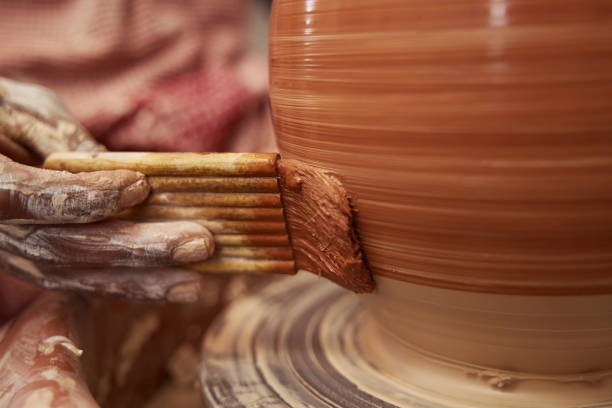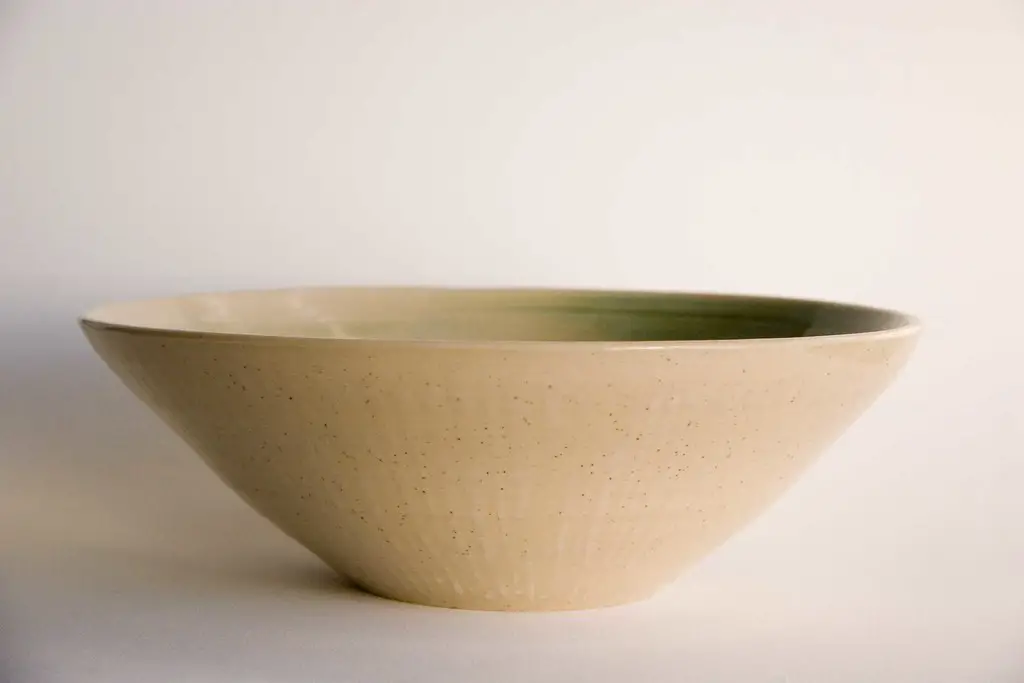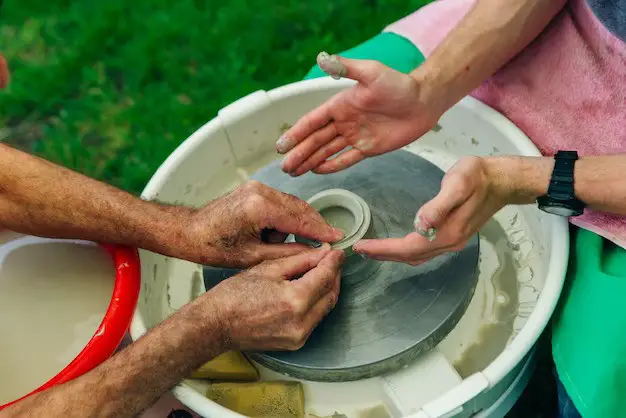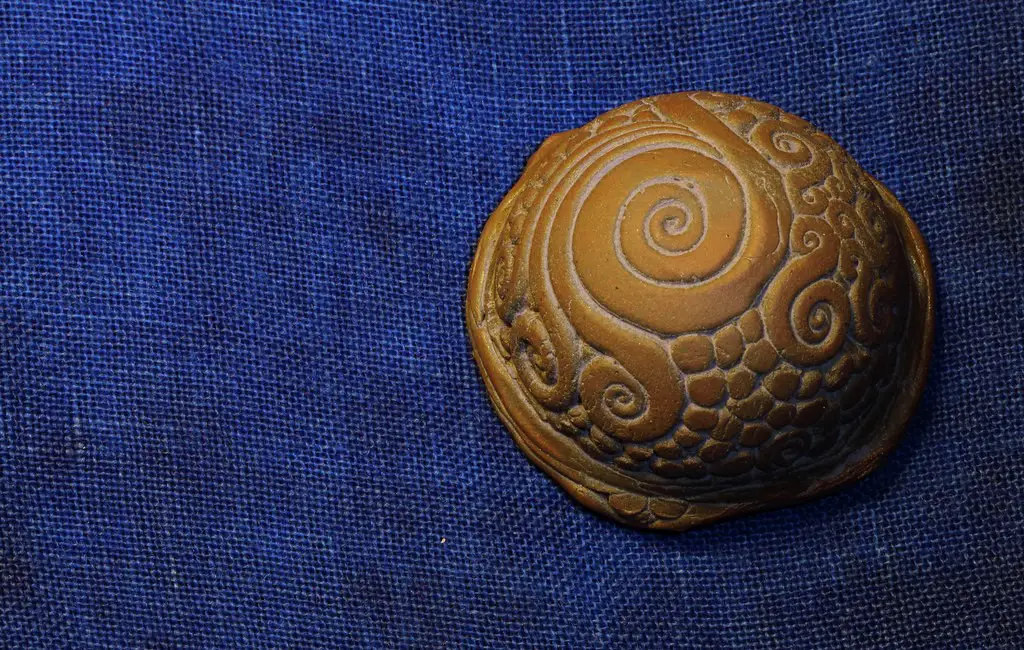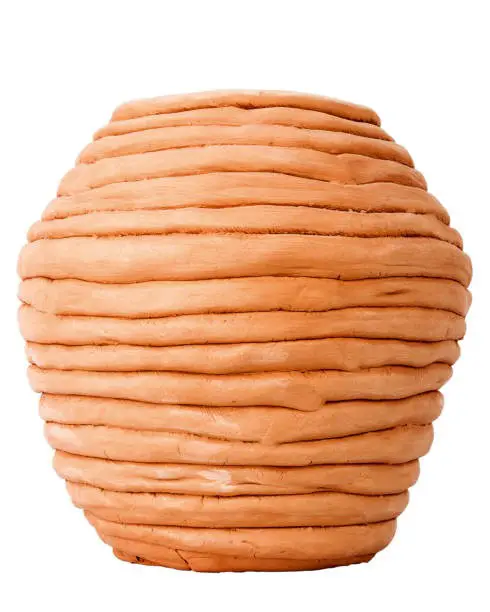When you’re choosing to start pottery, the first thing you’ll want to look into as well is clay. You need to figure out what the best clay for pottery is. The truth is there are different types of pottery clay, each with its pros and cons, and they are important to understanding. This post will go into detail about what the best clay for pottery is, and some of the different factors that you need to think about when you’re choosing this. You’ll be able to by the end of this, know what pottery clay you want, and what works for you.
So What is clay at the bottom of this
Clay at the bottom of all of this is essentially particles of rock, and when it’s eroded by the rain and wind, it’s then carried off via water. They then end up at the bottoms of streams and rivers, and these particles soon come together and they can become compacted.
Now, some types of clay are a bit different, and when it’s in different states, you can do many things with it, including the following:
- When it’s wet, it’s squishy and you can make things
- When it becomes chocolate consistency, not too hard or too soft, it can be scraped and carved
- When it’s dried further depending on the thickness and humidity, it becomes brittle
- When it’s wetted once again, it’s soft, so in essence, you can manipulate it based on temperatures
The only time it’s not able to be changed is when you heat the elements to high temperatures.
You can find clay in different places, including the following:
- On streams and riverbanks
- In quarries
- Construction sites that have places dug
- Even in your garden if you’re willing to dig 8 inches below the ground and you lived in a place with a lot of water in the past
You can extract clay and then use it for pottery. We discussed this in the previous post about how to get the clay out of the ground. However, there are different types of clay that you should consider getting, and we will discuss what the best one for pottery is.
The three Factors Necessary
The truth is, some factors are necessary to keep in consideration, and it’s important to understand.
Some of the different elements include:
- Shrinkage
- The strength of the body
- The temperature
- The workability of said clay
- What color do you want from this
- The plasticity of this
We will go over each of these factors in this section.
For Shrinkage, it’s important to understand this, because some of these shrink at different rates, with anywhere from 4-15% being the main range of shrinkage. The percentages do affect the final product, and you need to account for the temperatures. If you fire at cone 06 for example, you’ll lose about ½ of a percent, but then when it gets to cone 6, you can lose about 5.5%. That doesn’t even account for the actual drying too, which causes it to be lost. it’s important to realize that this plays a major part in it.
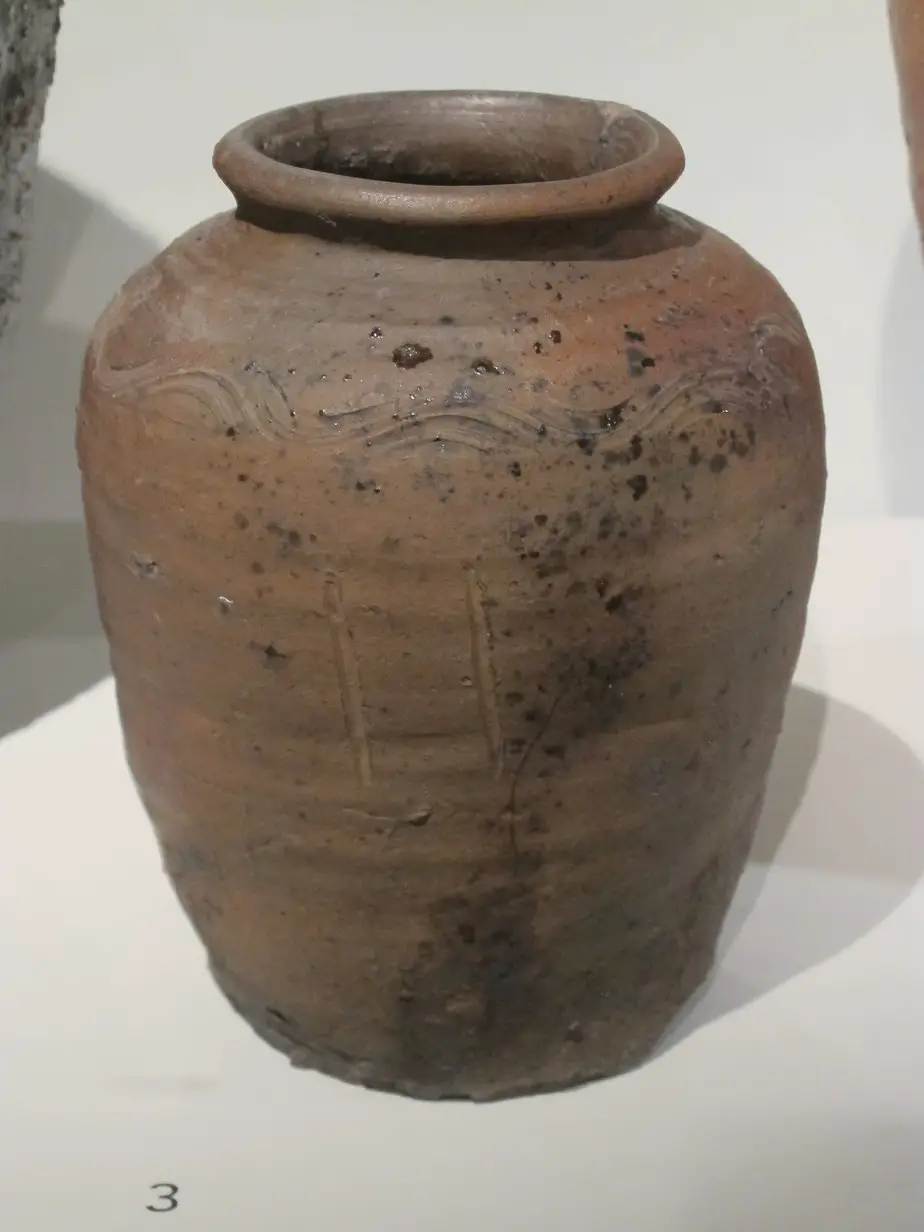
Temperature is essentially the maturation of this. There are a few rules for this, and they are as follows:
- The higher the clay body can be fired, the more vitreous it tends to be
- When it’s vitreous, it can’t absorb water when it’s fired
- If you choose a clay body that’s non-vitreous, water can get in even when it’s warm. When it drops, the temperature turns to ice, and this can cause it to crack
- The temperature ranges are important, and you should make sure that you understand it
The firing temps are important to understanding as well. For low-fire, you typically want to use earthenware for it. Stoneware is medium-fire with it being around cone 5-6 normally. High fire is where your porcelain goes, and that typically is cone 8-10, but that can go higher in some cases too.
Temperature is a big part of this, so it’s impregnation to know.
Then there is strength, which essentially is how it holds the form without it sagging, cracking, or stretching. There are a few important elements to keep in mind with this too
- Those that are hand-built need more strength when they’re in the stage of being greenware
- It‘s important to have more strength if the object is flat or large
- the typical higher ratio of grog is used for hand-building, and lower grog works well with this
- Higher grog also allows for a quicker air drying time and a reduction of cracking when drying
For plasticity, you want to make sure that if you’re making certain things, they’re workable. Earthenware usually is good for this, and if you work with sharp angles, you’ll be able to use this.
Workability is, in essence, the same thing, and this plays into how you utilize the clay on the wheel. You want a clay that you can center, open up, and then try once more.
Finally, you have color. Color is a big part of this, and it’s important to understand that this plays a part in it. For example, the following happens:
- Iron clay bodies, such as earthenware, will be red
- One that’s got manganese in there will be blackish
- Porcelain tends to be white
The color of this often is in the unglazed form, but even with glazes, most of the time it’s transparent.
Now that you know a bit about the different types of factors that go into this, let’s discuss each type now, shall we?
Earthenware
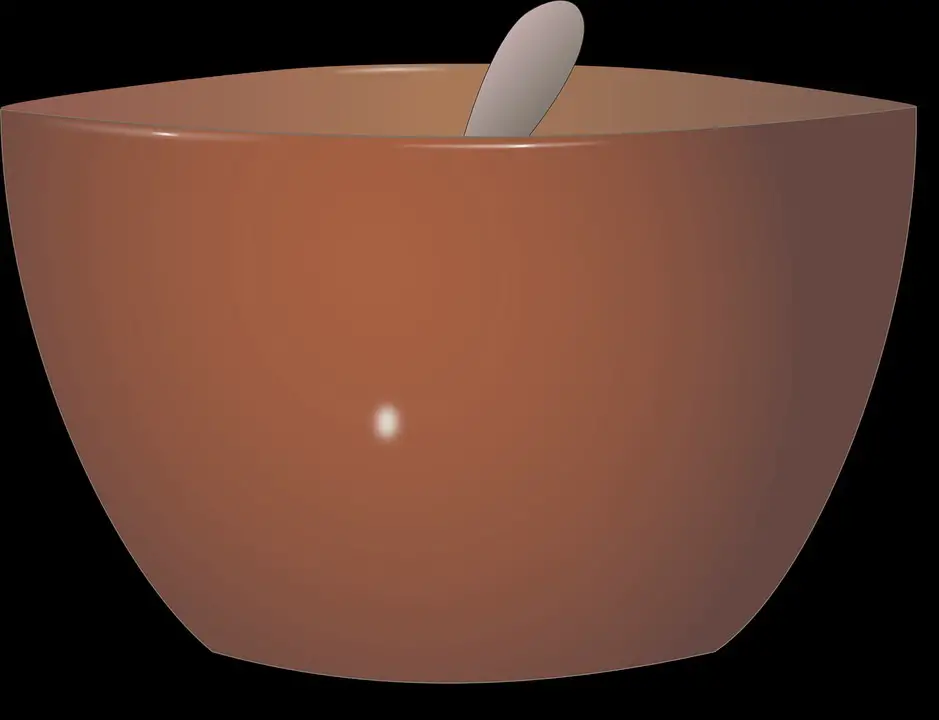
First, we have earthenware. These are white or reddish, and they’re usually low-fire. Ideally, you want to use these for planters, or anything outside. There are a few factors that you want to keep in mind, and they are as follows:
- To make these waterproof, you have to glaze
- They tend to be non-vitreous and have lower levels of shrinkage
- The dinnerware that can be fired here should only be used with lower temperatures, never higher ones
- If you repeat the exposure to these temperatures, you can crack and craze this
- They tend to contain iron and other impurities, which is why it has variable states of red, orange, and brown
- It’s not as durable as stoneware and porcelain
However, these are ideal for potters because they allow the plant to breathe with the design. You typically find these in various creek beds out there, and it’s transported from water and wind, and that’s what helps break it down into these clays. They’re not the strongest, but they do the job well.
Stoneware
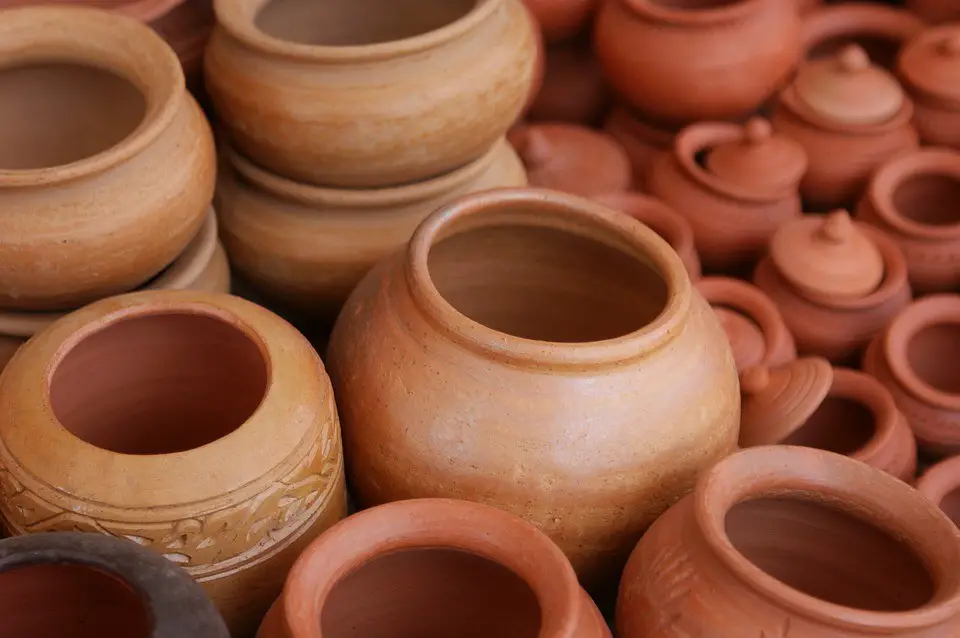
Stoneware is a mid-firing level of this, and in general, it’s typically a gray or a dark brown color. It’s got more impurities, and it’s much more durable than the earthenware equivalent. Usually, it’s virtuous and has almost no absorption to it.
You’ve got three types of stoneware clays, and it’s important to understand. Even though this type of clay is strong, multiple factors happen with this. Here are some of the qualities of these types of clays.
- Those that are high-fired tend to be earthen colored, durable, and react well to various types of firing, including reduction firing. They’ve got good plasticity, and they work well with both hand-building and wheel-throwing
- Mid-range go from about ranges of 4-6, and they’re usually similar to the high-fire alternatives, but you can save some money since they are lower in firing. This allows for oxidation atmospheres and more of a palette of different stains. It also causes less warping in the ware
- High-fire stoneware ones that are white are good if you’re looking to add different glaze colors. Sometimes, you get iron speckles, but most of the time the colors of the glaze aren’t affected. You can get good plasticity from these as well, and with the sand in it, it increases the workability and makes them work well when you fire themselves
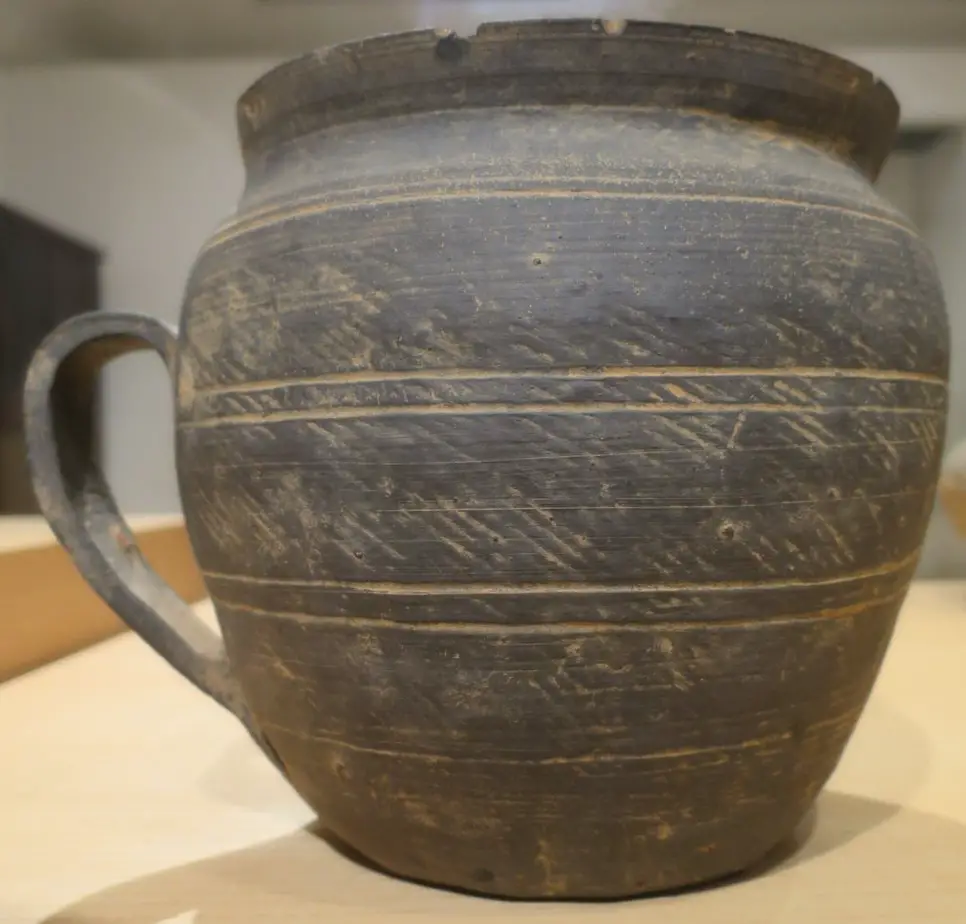
Ideally, if you’re looking for a clay that you can use at a mid-range of cone firing, this is the way to go. It allows for more of a different reaction to each and makes it so that you’re able to create more items. we’ll go over what clays are best for each though later on.
Porcelain
Finally, we’ve got porcelain. You’ve probably seen this, and know that it’s a whitish clay. However, there are more elements to it, and we’ll go over each of the properties
- It fires to durable, strong, and very vitreous ceramic
- It’s white due to the kaolin content
- However, other ingredients can change the properties, including the color
- Lots of times, because kaolin is the purest level of this, it may not have the other additives to make it stretcher
- This makes it harder to work with, but there are modifications to this to help with it
Porcelain clay is often fired to the highest levels, and it does create a quality piece. It’s also hard, which is a unique option for this, so it’s something that many people praise when they’re looking to figure out the ideal clay.
For some people, porcelain isn’t a fav because of how hard it is to work with. It does take a bit of time and learning to understand, but it’s much easier for you to better this, and to make it so that you’re able to truly master all of this.
What about Paper clay
There is paper clay, but this is actually something that you shouldn’t use in the kiln. it’s a decorative clay, and shouldn’t be used in dinnerware too. However, there are a few benefits to using this, and they are as follows:
- They can harden with air-drying
- Tend to be decent in terms of hardness without being fired in the kiln
- It can be used again by using water on this, allowing it to be used again
- It’s great to make molds, or even used in kids’ projects
- It’s a good clay, to begin with, and something that you can consider if you’re looking to use a clay that will work for you
With paper clay, you’ll be able to use a bit of this, and for some people, there are benefits to this, so make sure that you keep these in mind.
The Best Uses for Each
So what’s the best one for you? There are many different elements to this, and different types of factors to keep in mind. Ideally, you should look into what you’re going to make at the end of the day and choose the clay, based on this. We will go over each of the following ideal clays to use when you’re going to be making each piece:
- For anything holding foods or liquids: This is called functional ware, and they’re in essence the bowls and mugs. You can use dark stoneware or smooth white porcelain. You can also use some grogged texture clays, but they must have a low water absorption rate. For those stoneware bodies, you want to make sure that it’s got less than 3% absorption, and for porcelain, you want less than 1%
- Floor tiles and outdoor tiles: You will want something strong, durable, and can handle the temperature changes. Lots of times, you can get some different production techniques within the clay that has durability, and shrinkage that’s low. They should have absorption of less than 2% if you’re going outdoors. Always make sure you have glazing on this too, since it will help with the thermal shock of the tiles
- Ovenware: ideally, use stoneware clays, and ones that can handle thermal shock along with lower and higher temperatures. Those that are around cone 5 tend to be less susceptible to this, but you should make sure that ovenware can handle gradual heat and cooling. It would help if you chose a glaze that works well and can withstand the heating and cooling changes
- Atmospheric Clays: these are the ones that are used in raku, salt fire, woodfire, and reduction, all of which are atmospheric processes that do need to withstand the temperatures that are done since they can get to extreme temperatures. Ideally, you should look in the clay section, and look for ones that are explicitly said to help with this type of clay firing, and then go from there
- Sculptures: if you’re going to make a sculpture, you want ones with a large amount of sand, grog, and different sizes of mesh that do have levels of shrinkage that are low. You want those that can handle various hand-built, sculpted, or wheel-thrown objects. These tend to have a lot of plasticity to them, so earthenware and some stoneware typically are the best. Paper clay, if you’re not going to be throwing it in the kiln, works here as well
Choosing the Right Clay
So how do you choose the clay that’s right for you? Well, you always have to consider a few elements to this, and they are as follows:
- What do you want to make?
- What kinds of glazes are you going to throw on this?
- What type of color do you want on this?
- How much shrinkage do you want?
- What is the purpose of this piece?
By understanding that there are different parts to this, it can make a huge difference in this. Sometimes, some types of clay can be more plastic than others. Lots of times, the iron will also interact with the clays to create a result with this.
When it comes to shrinkage, you should always watch out for this. A piece that you favorited and loved when you made it might be a whole lot smaller. Lots of times. It can be a nightmare, because you may have fired it all right during the bisque, but then the glaze firing means that they lost a lot of the different elements to it.
You should make sure that the functional ware has clay that does reach the material. Lots of times, the commercial clays have other materials that are in there, and the directions will tell you how high it’s got to be. Lots of times as well, if it becomes vitrified, the clay may get smaller too, but you want to hit this since it becomes almost like glass, pushes the water out, and then becomes much more waterproof.
On waterproofing
Some types of clays also need to be waterproof, and they are as follows:
- If they low-fire
- If they tend to be non-vitreous
Lots of times, people think glaze automatically will be waterproof, but the thing is, if it’s low-fire, you need a higher level of glaze to make sure that it gets some vitrification. But, the unfortunate truth of the matter is, that’s limited. You’ll want to when choosing a glaze for this, realize that you need to look at the effectiveness of this, and you’ll want a glaze that works for this. Ideally, choose something that’s got the following:
- Good waterproofing properties
- One that allows it to expand along with contracts at similar rates
- One that doesn’t crack at microscopic levels
If it does crack, that actually will cause it to not be waterproof. The best test to do this is to put it in the freezer, and then in boiling water, or you can put boiling water into a cup that’s frozen. If you notice that it is not crazing, you’re good.
Stoneware is durable in that sense, but you’ll want to make sure that you do fire it high enough, because even with a good waterproofed glaze on this, putting it only at cone 5 doesn’t protect it from the wear and tear of daily use, and usually isn’t microwave-safe or dishwasher safe. At cone ten, it’s a lot stronger, and it holds up.
But, there are a few factors with this, and they are the following:
- If it doesn’t mature, it’s too porous
- If you overfire, you will melt it, so you need a happy medium
- You can determine most of the firing ranges based on what the clay says, and you should fire closer to the higher level if you’re creating functional ware
If you’re wondering whether clay has matured or not, do a porosity test, where you take clay, fire it to temperature, and then weigh it, throw it into some boiling water, and then let it cool. Weigh it again in this new unit of time. The difference is the porosity. Typically, it’s around 1-3% ideally, with zero being almost impossible for you to get. Around 4-5, it’s waterproof enough to be functional. Above that, you should try to make sure that you don’t use it as a functional piece, but instead, keep it in a decorative sense. Typically, if you want to use it in the microwave, you want a very low level of porosity, since that will otherwise cause water to leak, and that causes expansion and contractions
When you’re trying to figure out the best means to choose your pottery clay, there are a lot of different factors here. By checking with this, seeing what you should use, and also weighing it against the type of function you want this functional ware to have, and also what colors and textures you want, you’ll be able to choose a clay that works for you, and you’ll be able to create a good and very in-depth undemanding on just what’s going on with the clay.



